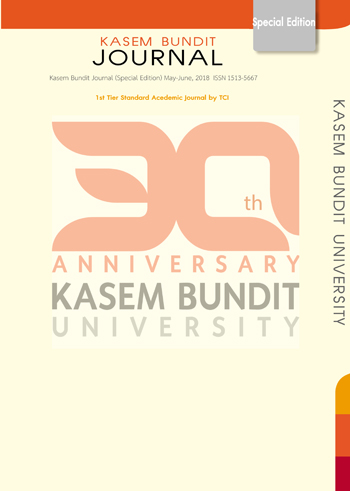A Study of Thermal Comfort of Local Houses in Urban Areas: Ramdaeng Songkhla Province
Keywords:
thermal comfort, vernacular architectureAbstract
The article tries to demonstrate thermal comfort among local houses using natural ventilation. The study’s main objective is to study the physical architectural characteristics and to assess living comfort in local houses. The researchers explored two distinctive architectural dwellings in Ramdaeng Community, Singhanakorn District, Songkhla Province. According to its geography, the community is located in the South of Thailand. From the site survey, local knowledge and wisdom are applied and adapted according to local culture and environment. Building methods and building technology are transferred among local people in the Songkhla Lake Basin area. Furthermore, they tended to apply local materials in their local architecture. Questionnaire and field research were the main key processes. 200 samples were used in the questionnaire. It was found that Thai people’s thermal comfort relates to natural ventilation. In other words, thermal comfort is the operative temperature that people feel comfortable. The average temperature for the thermal comfort is 28.0–30.2 oC when comparing to operating temperature. The results from the study show that Thai people were comfortable with temperature calculated by ASHRAE 55. Moreover, thermal comfort for Thai people seems to be higher than standard by 2.0–4.2 oC. When comparing with Busch study, it stated that Thais are within the maximum range of comfort conditions using natural ventilation of Busch by 0.8 to 1 oC. Referring to the study, both local construction technology and materials affected temperature and the ventilation system in vernacular houses. Also, Thai people can adapt themselves with the temperature as well.
References
Handbook Fundamentals, Physiological Principles and Thermal Comfort.
A.G Kwok. (1998).Thermal comfort in tropical schools ASHRAE Transactions., 104.
pp. 1031-1047
ASHRAE. (1992). Thermal environmental condition for human occupancy. ANSI/ASHRAE
standard 55.
Busch, J. (1990).Thermal responses to the Thai office environment. ASHRAE
Transactions 96(1) :859-872
Fanger, P.O. (1970). Thermal Comfort Analysis and Applications in Environmental
Engineering, Technical University of Denmark, Laboratory of Heating and Air
Conditioning.
Givoni, B. (1998). Climate considerations in building and urban design. New York: Van
Nostrand Reinhold
Meteorological Development Office. (2003) Bangkok Weather Information. Cluster
Information Services Meteorological Development Office.
Downloads
Published
How to Cite
Issue
Section
License
ทัศนคติ ความคิดเห็นใด ๆ ที่ปรากฏในวารสารเกษมบัณฑิตฉบับนี้เป็นของผู้เขียน โดยเฉพาะ มหาวิทยาลัยเกษมบัณฑิตและบรรณาธิการ ไม่จำเป็นต้องมีความเห็นพ้องด้วย







